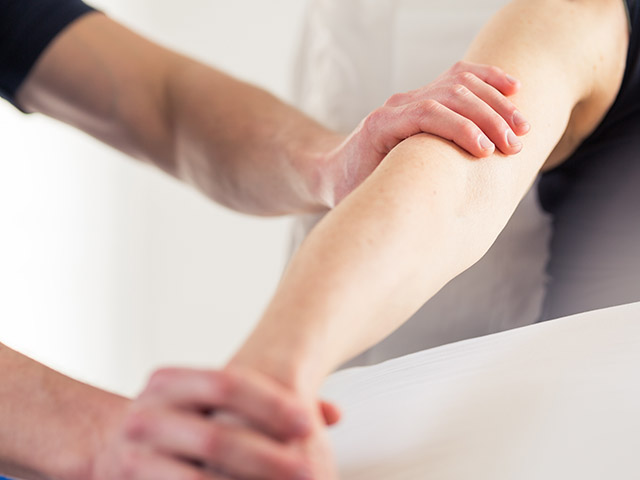
03 Apr What is a soft tissue injury?
Luckily for us, we have hard structures like bone, cartilage, and teeth that give shape and support to our bodies. In addition to these hard tissues, we also have several other components known as soft tissue. These softer elements include muscle, ligaments, tendons, fat, our nerves, blood vessels, and our skin amongst others. We have these soft tissues to thank for allowing us to move our bodies, pump blood to our tissues, and send electrical signals along our nerves to coordinate a myriad of vital bodily functions.
Many of the injuries we treat as physiotherapists involve three types of soft tissue: muscle, tendon, and ligament.
Muscles connect to tendons which then connect to bones. When a muscle or the tendon it attaches to are overstretched, they can become damaged or torn. This injury is known as a ‘strain’. It can range in severity from a very small tear to a few muscle fibres to a complete rupture of the entire muscle or tendon. Muscles that are commonly strained include the back, calf, hamstrings and quadriceps muscles. Muscle strains are acute injuries that usually come on suddenly during sport, or when performing tasks such as lifting heavy items.
Some injuries to tendons come on over time due to overuse such as repetitive jumping with volleyball or swinging a tennis racket thousands of times. These types of overuse injuries which overload the tendons cause a condition known as tendonitis.
Another common injury to muscles is bruising (also known as a ‘contusion’). This may seem to be a minor injury, and often it is. At other times however trauma can cause large contusions which cause swelling and pain. These large contusions can limit the ability of the joints in the region of the bruise to move normally.
In contrast to tendons, ligaments do not connect to muscles. Instead, they connect one bone to another bone. If you have ever rolled your ankle inwards and felt a pulling on the outer side of the ankle, what you likely felt was the ligaments which connect your ankle to your foot being overstretched. If your ankle rolled too far, you may have experienced a ‘sprained’ ankle, which is a very common ligamentous injury. Similar to muscle strains, ligament sprains can range from mild to severe. The blood supply to ligaments is much poorer than the blood supply which is delivered to muscles. This means that ligament sprains take longer to heal than muscle strains because blood flow brings with it the nutrients and healing agents needed to hasten tissue recovery.
Anyone who has had a ‘soft tissue’ injury is able to fully understand the importance of these soft tissues, and to realize just how hard these tissues work for us every day to make our life easier and free from pain. It is important not to underestimate these injuries as they tend to tend to reoccur over time if not treated properly at the time of the initial injury. Chronic or recurrent injuries often lead to individuals giving up activities they used to love, when in fact may of them would have been able to continue had they fully recovered from their injuries in the first place.
Physiotherapy treatment for strains, sprains and tendonitis aims at restoring the range of movement of the joints, decreasing swelling and pain, and gradually progressing through appropriate and safe exercises to facilitate healing, regain strength, and prevent the risk of re-injury.
Rebeca Garvin
Chartered Physiotherapist



No Comments